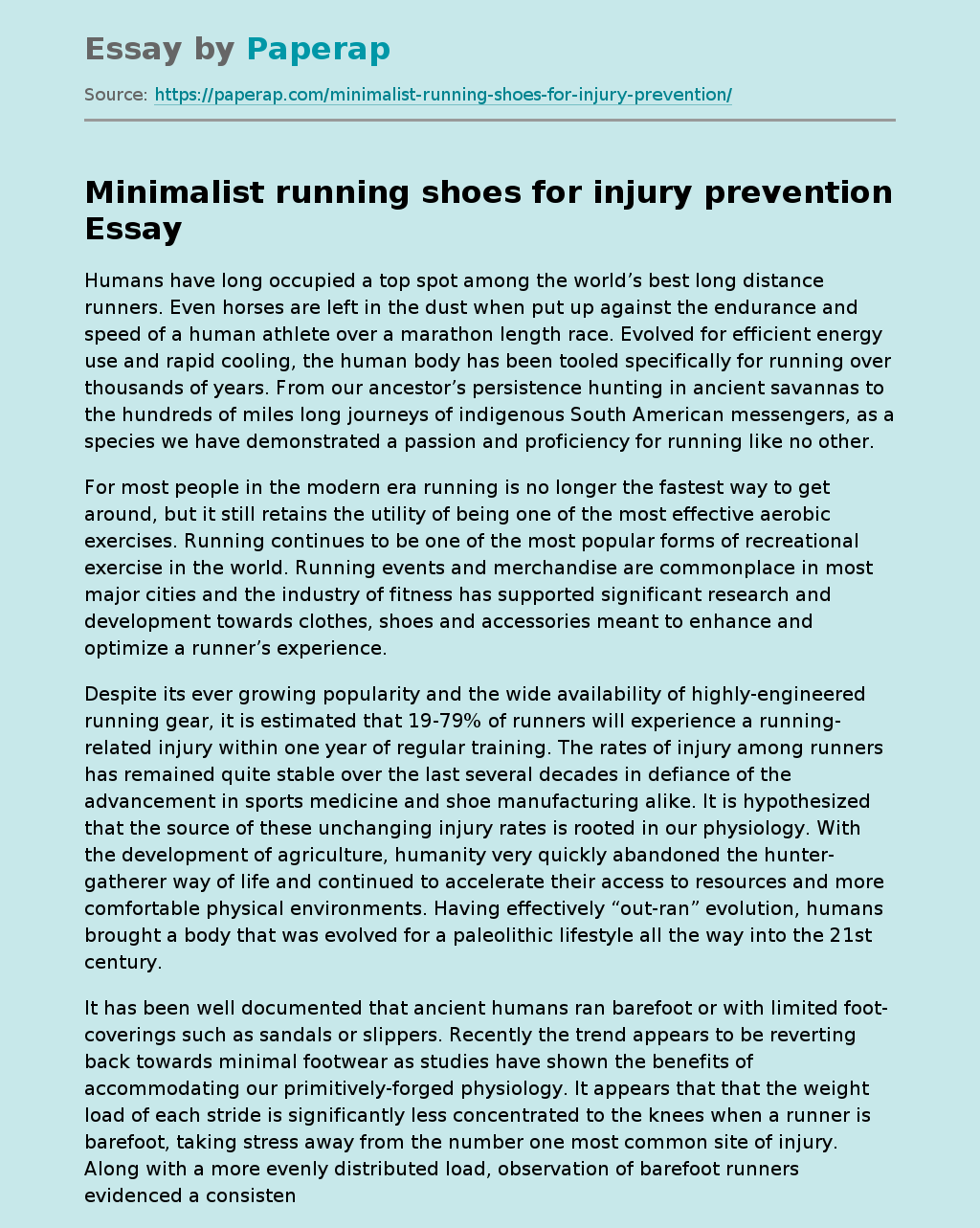Minimalist running shoes for injury prevention
Humans have long occupied a top spot among the world’s best long distance runners. Even horses are left in the dust when put up against the endurance and speed of a human athlete over a marathon length race. Evolved for efficient energy use and rapid cooling, the human body has been tooled specifically for running over thousands of years. From our ancestor’s persistence hunting in ancient savannas to the hundreds of miles long journeys of indigenous South American messengers, as a species we have demonstrated a passion and proficiency for running like no other.
For most people in the modern era running is no longer the fastest way to get around, but it still retains the utility of being one of the most effective aerobic exercises. Running continues to be one of the most popular forms of recreational exercise in the world. Running events and merchandise are commonplace in most major cities and the industry of fitness has supported significant research and development towards clothes, shoes and accessories meant to enhance and optimize a runner’s experience.
Despite its ever growing popularity and the wide availability of highly-engineered running gear, it is estimated that 19-79% of runners will experience a running-related injury within one year of regular training. The rates of injury among runners has remained quite stable over the last several decades in defiance of the advancement in sports medicine and shoe manufacturing alike. It is hypothesized that the source of these unchanging injury rates is rooted in our physiology.
With the development of agriculture, humanity very quickly abandoned the hunter-gatherer way of life and continued to accelerate their access to resources and more comfortable physical environments. Having effectively “out-ran” evolution, humans brought a body that was evolved for a paleolithic lifestyle all the way into the 21st century.
It has been well documented that ancient humans ran barefoot or with limited foot-coverings such as sandals or slippers. Recently the trend appears to be reverting back towards minimal footwear as studies have shown the benefits of accommodating our primitively-forged physiology. It appears that that the weight load of each stride is significantly less concentrated to the knees when a runner is barefoot, taking stress away from the number one most common site of injury. Along with a more evenly distributed load, observation of barefoot runners evidenced a consistently shorter stride and a higher stride rate per minute. These qualities are typically encouraged in training technique due to their positive effect on the speed and sustainability of the runner.
Barefoot running seems to be suited for the structure of how we run, but when an athlete attempts to abruptly change their style they may have to be wary. Aside from the dangers of stepping on something sharp, the increase in stress to the foot and lower leg introduced by the altered stride of barefoot running can introduce new problems. The athlete may experience muscle strain in their calves and stress fractures of the small bones of their foot if they do not deliberately introduce barefoot running with great care. It is recommended to begin introducing barefoot running extremely gradually to avoid suffering the consequence of underdeveloped foot muscles and uncultivated tendons normally masked by the heel cushions on modern shoes.
The most recent iteration of the barefoot running trend has settled into an amenable commercial compromise in the industry of minimalist shoes. Here, runners can experiment with a gradient of low-impact foot coverings that offer protection to the bottom of their feet with the physiologically hospitable comfort of a wide toe-box and a “zero-drop” sole in which the heel is the same distance from the ground as the toe. This type of running shoe seems to be gaining popularity as a best of both worlds, offering the protection against the elements while still offering a more suitable physical environment for sustainable injury-free exercise. With the caution of a gradual introduction to new technique and an eye towards future research on the most effective footwear, minimalist shoes seem to hold a lot of potential for keeping people on their feet.
Sources
- Altman, A. R., & Davis, I. S. (2012). Barefoot Running: Biomechanics and Implications for Running Injuries. Current Sports Medicine Reports, 11(5), 244–250.
- Fields, K. B., Sykes, J. C., Walker, K. M., & Jackson, J. C. (2010). Prevention of Running Injuries. Current Sports Medicine Reports, 9(3), 176–182.
- Lieberman, D. E. (2012). What We Can Learn About Running from Barefoot Running: An
- Evolutionary Medical Perspective. Exercise and Sport Sciences Reviews, 40(2), 63–72.
- Rixe, J. A., Gallo, R. A., & Silvis, M. L. (2012). The Barefoot Debate: Can Minimalist Shoes Reduce Running-Related Injuries? Current Sports Medicine Reports, 11(3), 160–165.
Minimalist running shoes for injury prevention. (2021, Nov 11). Retrieved from https://paperap.com/minimalist-running-shoes-for-injury-prevention/

